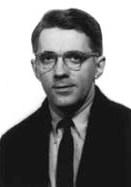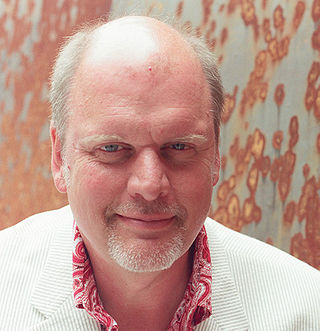Related Research Articles

David Eugene Tudor was an American pianist and composer of experimental music.

John Milton Cage Jr. was an American composer and music theorist. A pioneer of indeterminacy in music, electroacoustic music, and non-standard use of musical instruments, Cage was one of the leading figures of the post-war avant-garde. Critics have lauded him as one of the most influential composers of the 20th century. He was also instrumental in the development of modern dance, mostly through his association with choreographer Merce Cunningham, who was also Cage's romantic partner for most of their lives.

Christian G. Wolff is an American composer of experimental classical music and classicist.

James Tenney was an American composer and music theorist. He made significant early musical contributions to plunderphonics, sound synthesis, algorithmic composition, process music, spectral music, microtonal music, and tuning systems including extended just intonation. His theoretical writings variously concern musical form, texture, timbre, consonance and dissonance, and harmonic perception.

Alvin Augustus Lucier Jr. was an American composer of experimental music and sound installations that explore acoustic phenomena and auditory perception. A long-time music professor at Wesleyan University in Middletown, Connecticut, Lucier was a member of the influential Sonic Arts Union, which included Robert Ashley, David Behrman, and Gordon Mumma. Much of his work is influenced by science and explores the physical properties of sound itself: resonance of spaces, phase interference between closely tuned pitches, and the transmission of sound through physical media.
Robert Reynolds Ashley was an American composer, who was best known for his television operas and other theatrical works, many of which incorporate electronics and extended techniques. His works often involve intertwining narratives and take a surreal multidisciplinary approach to sound, theatrics and writing, and have been continuously performed by various interpreters during and after his life, including Automatic Writing (1979) and Perfect Lives (1983).
Joan Linda La Barbara is an American vocalist and composer known for her explorations of non-conventional or "extended" vocal techniques. Considered to be a vocal virtuoso in the field of contemporary music, she is credited with advancing a new vocabulary of vocal sounds including trills, whispers, cries, sighs, inhaled tones, and multiphonics.

Roger Lee Reynolds is an American composer. He is known for his capacity to integrate diverse ideas and resources, and for the seamless blending of traditional musical sounds with those newly enabled by technology. Beyond composition, his contributions to musical life include mentorship, algorithmic design, engagement with psychoacoustics, writing books and articles, and festival organization.

David Behrman is an American composer and a pioneer of computer music. In the early 1960s he was the producer of Columbia Records' Music of Our Time series, which included the first recording of Terry Riley's In C. In 1966 Behrman co-founded Sonic Arts Union with fellow composers Robert Ashley, Alvin Lucier and Gordon Mumma. He wrote the music for Merce Cunningham's dances Walkaround Time (1968), Rebus (1975), Pictures (1984) and Eyespace 40 (2007). In 1978, he released his debut album On the Other Ocean, a pioneering work combining computer music with live performance.

Michael Kevin Daugherty is an American composer, pianist, and teacher. He is influenced by popular culture, Romanticism, and Postmodernism. Daugherty's notable works include his Superman comic book-inspired Metropolis Symphony for Orchestra (1988–93), Dead Elvis for Solo Bassoon and Chamber Ensemble (1993), Jackie O (1997), Niagara Falls for Symphonic Band (1997), UFO for Solo Percussion and Orchestra (1999) and for Symphonic Band (2000), Bells for Stokowski from Philadelphia Stories for Orchestra (2001) and for Symphonic Band (2002), Fire and Blood for Solo Violin and Orchestra (2003) inspired by Diego Rivera and Frida Kahlo, Time Machine for Three Conductors and Orchestra (2003), Ghost Ranch for Orchestra (2005), Deus ex Machina for Piano and Orchestra (2007), Labyrinth of Love for Soprano and Chamber Winds (2012), American Gothic for Orchestra (2013), and Tales of Hemingway for Cello and Orchestra (2015). Daugherty has been described by The Times (London) as "a master icon maker" with a "maverick imagination, fearless structural sense and meticulous ear."
Earle Brown was an American composer who established his own formal and notational systems. Brown was the creator of "open form," a style of musical construction that has influenced many composers since—notably the downtown New York scene of the 1980s and generations of younger composers.
Lovely Music is an American record label devoted to new American music. Based in New York City, the label was founded in 1978 by Mimi Johnson, an outgrowth of her nonprofit production company Performing Artservices Inc. It is one of the most important and longest running labels focusing exclusively on new music and has released over 100 recordings on LP, CD, and videocassette.

The School of Music, Theatre, and Dance is the undergraduate and graduate school for the performing arts of the University of Michigan, in Ann Arbor, Michigan, United States.
Mimi Johnson is a New York City-based arts administrator.
Stephen Whittington is an Australian composer, pianist, teacher and writer of music.

The ONCE Group was a collection of musicians, visual artists, architects, and film-makers who wished to create an environment in which artists could explore and share techniques and ideas in the late 1950s and early 1960s. The group was responsible for hosting the ONCE Festival of New Music in Ann Arbor, Michigan, between 1961 and 1966. It was founded by Ann Arborites Robert Ashley, George Cacioppo, Gordon Mumma, Roger Reynolds and Donald Scavarda.
Live electronic music is a form of music that can include traditional electronic sound-generating devices, modified electric musical instruments, hacked sound generating technologies, and computers. Initially the practice developed in reaction to sound-based composition for fixed media such as musique concrète, electronic music and early computer music. Musical improvisation often plays a large role in the performance of this music. The timbres of various sounds may be transformed extensively using devices such as amplifiers, filters, ring modulators and other forms of circuitry. Real-time generation and manipulation of audio using live coding is now commonplace.
The Sonic Arts Union was a collective of experimental musicians that was active between 1966 and 1976. The founding members of the group were Robert Ashley, David Behrman, Alvin Lucier and Gordon Mumma, all of whom had worked together in the instrumental performances of the ONCE festivals. They initially toured under the name Sonic Arts Group, until, at Ashley's suggestion, the name was changed to Sonic Arts Union.

Three Bagatelles, for David Tudor, better known by its original French title Trois bagatelles, is a 1961 solo piano composition by Hungarian composer György Ligeti. The composition is well known for its tacet sections.
Mary Ashley was an important early video artist and performance artist, painter, and a founding member of the influential ONCE Group, together with her then-husband, the composer Robert Ashley. She was later active in the Correspondence Art scene, collaborating with Fluxus artists including Dick Higgins and George Brecht. She is credited with introducing the Ozalid process, an ammonia-based technique for the reproduction of industrial drawings, to the art world.
References
- 1 2 Fillion, Michelle "Gordon Mumma's Music for Solo Piano (1960–2001)". Liner notes to GORDON MUMMA - MUSIC FOR SOLO PIANO 1960–2001. New World Records.
- ↑ "Biography." Brainwashed.com.
- ↑ "Gordon Mumma :: Foundation for Contemporary Arts". www.foundationforcontemporaryarts.org. Retrieved 2018-04-05.